A new roof has been up on the house, thanks to Delta Contracting Services and Sika Sarnafil, keeping all that cellulose dry and allowing us to push ahead with interior work. The roof is made from tapered rigid insulation (polyisocyanurate), topped with a high density board of the same material, and sealed with a single-ply Sika Sarnafil membrane. This added layer of insulation not only ramps up the R-value of our roof to an average value of R-64, but also provides the much needed slope on top of our flat roof panels to shed water.
We chose to make the roof white to increase the reflectivity of the roof surface which in turn keeps its overall temperature down. This means less heat pollution during those hot DC summers, and less contribution to the urban heat island effect.
Urban heat island is when the built-up surfaces of a city (roads, roofs, buildings) trap the sun’s heat during the day and radiate it out, increasing the overall local temperature by as much as 22 degrees at night! This affects local weather patterns, energy consumption for summertime cooling and can have an impact on the number of days over 95 degrees, of which we’ve had plenty this summer. White roofs can be considered ‘cool’ when compared to a typical black roof surface – check out the research being done by the Center for Climate Systems Research at Columbia University- they’re comparing white roofs, black roofs and green roof surfaces around NYC to see which keeps the roof the coolest. A quick temperature comparison can be seen at the Queens Botanical Garden monitoring station, where they have all three roof surfaces being monitored.
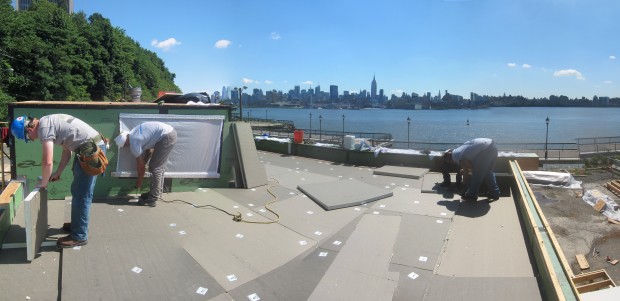
Andrew, Scott and Rob cut tapered boards of polyiso to fit the roof before they are mechanically fastened.
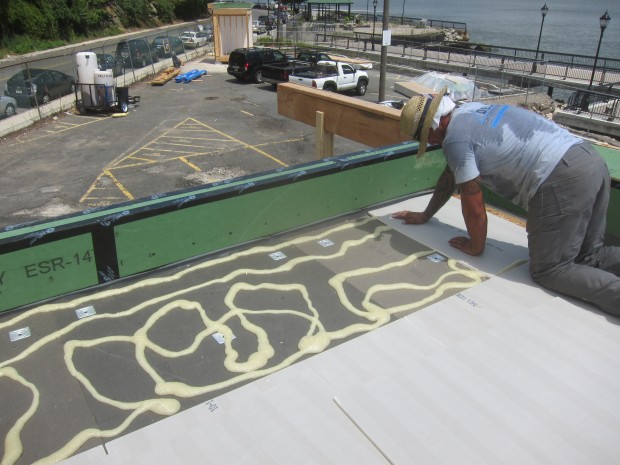
Adhering a half-inch layer of high density polyiso to the tapered layer beneath. The high-density layer provides enough compressive strength to withstand the weight of our ballasted pv array without damaging the insulation.
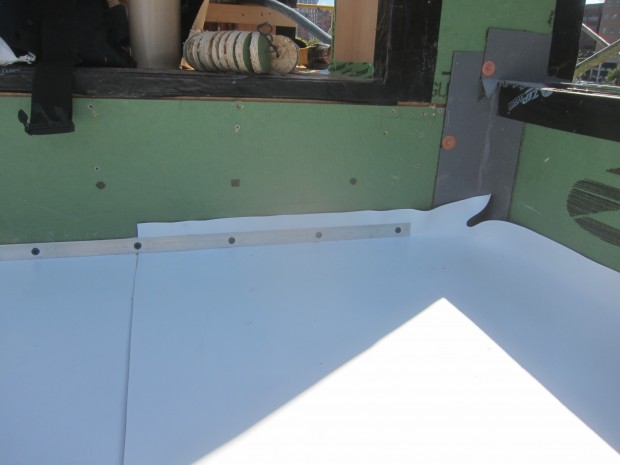
After the membrane is adhered, it is secured at the parapet wall with a termination bar to keep it in place.
Our roof was made watertight by hot air welding the seams of the membrane – no open flames here, just hot air close to 800 degrees! This will make it easy for us to piece the house together after it arrives in DC; a small 6 inch strip of membrane can be laid over the seam and welded to create a continuous waterproof surface. The water is all directed towards a rain garden feature on the ground, that will capture and filter the water runoff.
Many, many thanks to the generous support of Sika Sarnafil and Delta Contracting Services of New Jersey for providing their expertise, experience and time to install this new roof.

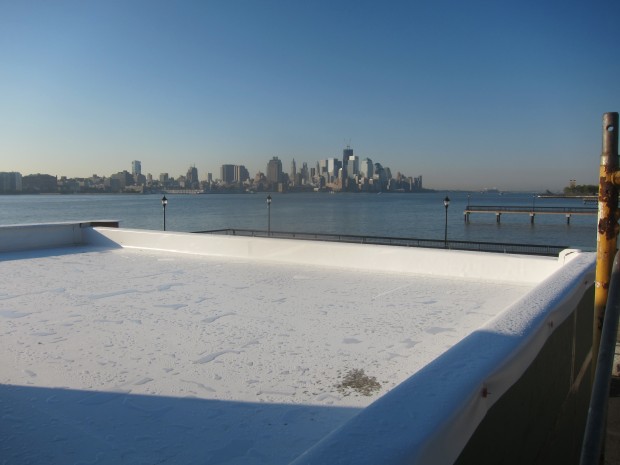
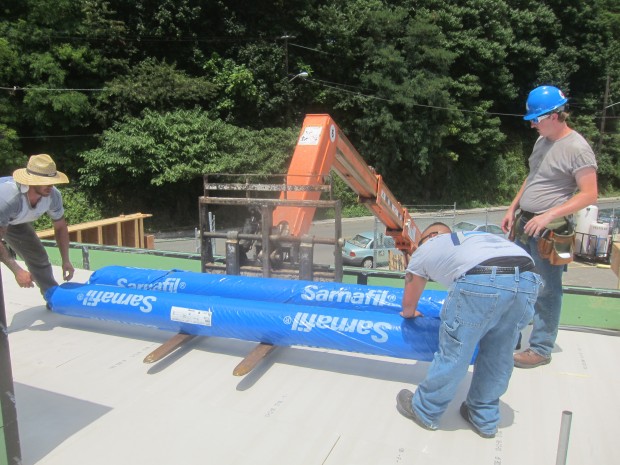
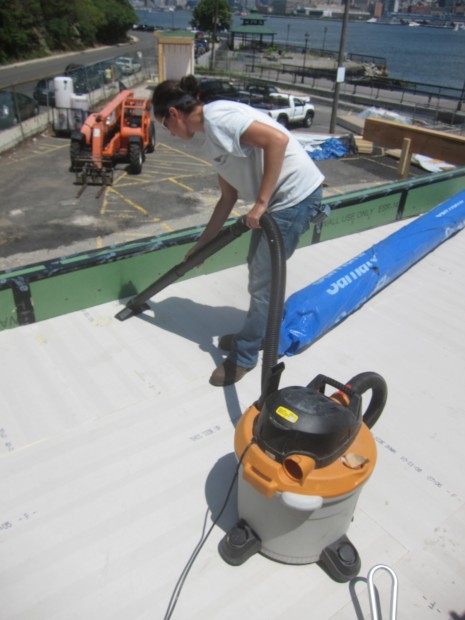
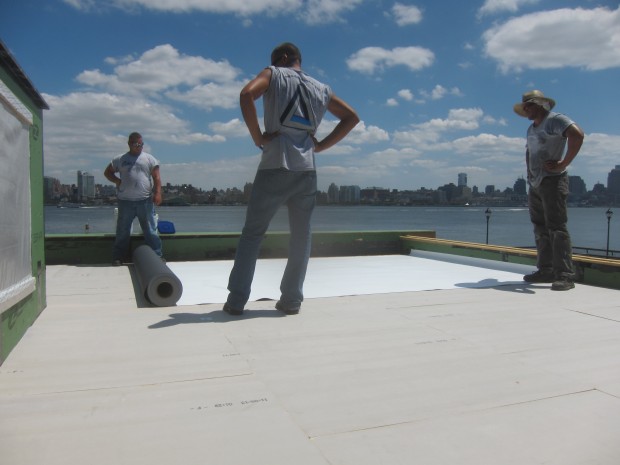
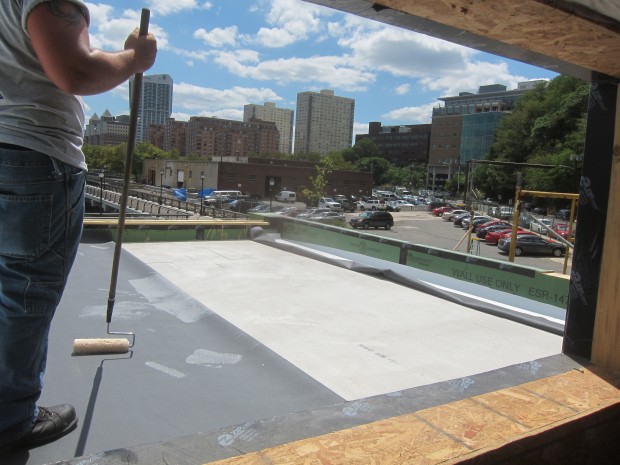
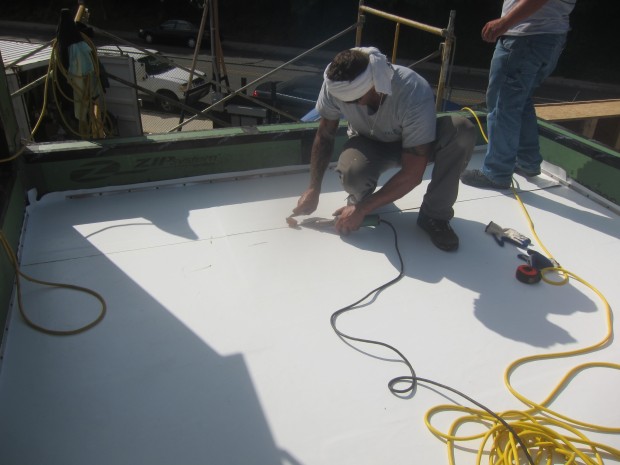
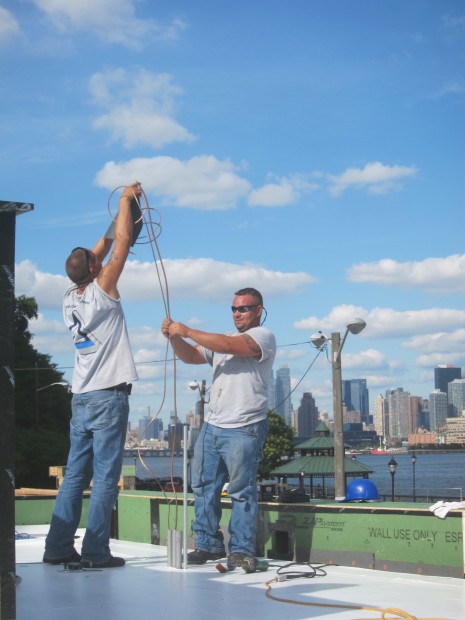
Become a fan on
Follow us on
Copyright © 2011 • All Rights Reserved • Parsons NS Stevens + Solar Decathlon 2011